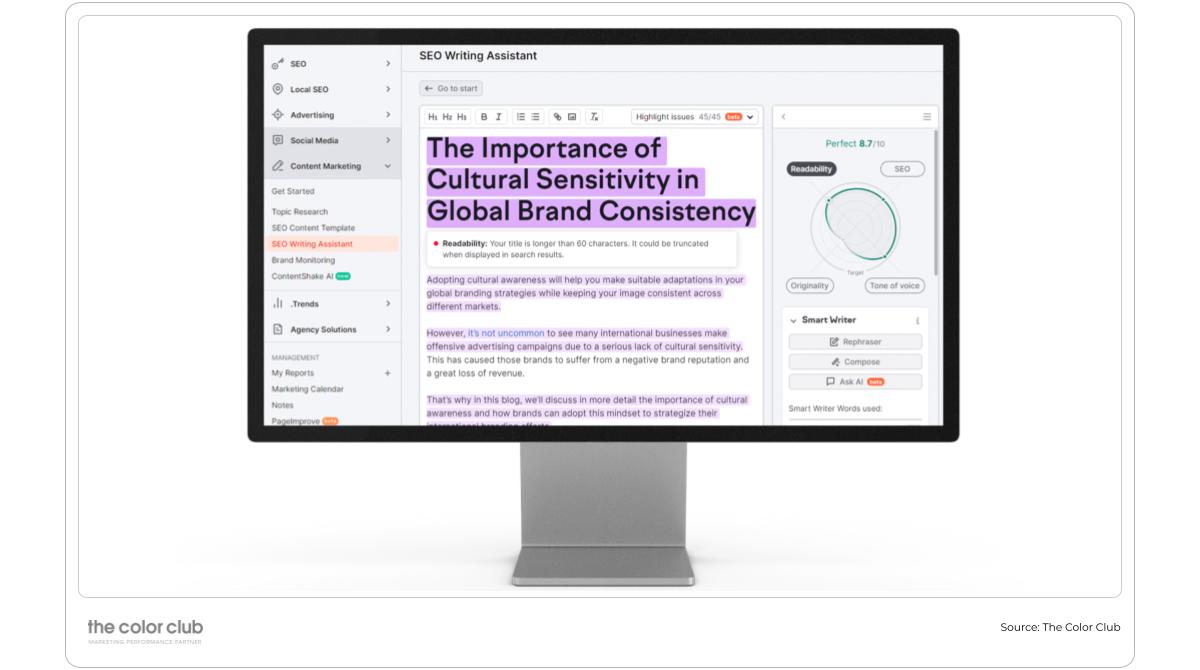Introduction
How do brands extend their global reach and impact other markets while building customer trust? Simply put, with an effective multilingual content strategy.
With this tactic, brands can create content to reach a global audience, adapting and localizing their marketing to engage with customers and build brand awareness in different regions. By doing so, brands break down language and cultural barriers to establish relationships worldwide, helping companies go from local to global.
But how do you develop a multilingual content strategy?
Well, that’s what our latest article will explore. We’ll give some helpful advice on developing a strong multilingual strategy, no matter what markets you target, as well as what challenges you might face in today’s modern marketing landscape.
Chapters
What is Multilingual Content marketing?
Why is Multilingual Content Marketing important to you?
What are the benefits to your brand of Multilingual Content Marketing?
Look out for these challenges using multilingual content marketing
Your 5-step Guide to Building an Effective Multilingual Content
Our final thoughts on a multilingual content marketing strategy
What is Multilingual Content marketing?
Multilingual content marketing is developing marketing content in multiple languages. This includes blog posts, social media, videos and other forms of digital media.
But this strategy isn’t just a matter of translating.
With multilingual content, you also need to understand market cultures and nuances to really connect and engage with a new audience. As a result, localization plays an important part. This will make your content more relevant to each market, helping your brand build customer trust and interest for long-term market success.
Why is Multilingual Content Marketing important to you?
By adopting this strategy, brands will break down any language barrier, respecting each market’s cultures, traditions and history to help build an impactful presence in new regions and create long-standing customer relationships.
Brands with a successful multilingual content strategy position themselves to compete globally, reaping the rewards of an international market.
What are the benefits to your brand of Multilingual Content Marketing?
Here are the top key benefits of introducing a multilingual content strategy:
Boost your yearly revenue and sales
By localizing your content, you’ll target more effectively customers in new markets, increasing the likelihood of engagement and sales. For example, Adparlor found that click-through rates on ads significantly improved when ads used the market’s native language.
Up your competitiveness
With a multilingual approach to marketing, you’ll reach a wider audience and discover new customers worldwide. Introduce this strategy before your competitors, and you’ll establish yourself first in emerging markets, positioning you as a market leader.
Build long lasting customer loyalty
By speaking your customer’s language, having cultural understanding, and knowing the nuances of the local market, you’ll develop stronger, more meaningful relationships with customers and increase the likelihood of repeat custom.
Look out for these challenges using multilingual content marketing
Manage your resources
Investing in this strategy takes time and money. Depending on how many markets you enter, you’ll have to continuously adapt your content to each new region. This is when an outsourcing partner comes in handy to take the pressure off your marketing teams.
Have flexible branding & messaging
With different markets come different interests and connotations, meaning you’ll need branding flexibility. For effective campaigns, you’ll have to create messaging that resonates strongly with local audiences, but ensure it continues to reflect your core values for brand consistency.
Your 5 step Guide to Building an Effective Multilingual Content
Marketing strategy
Following our five-step process, you’ll create a successful multilingual content marketing strategy that effectively connects with diverse audiences and builds global brand awareness.
For the first step, you’ll need to:
Identify your languages and audiences
By identifying the languages and cultures of your target audience, you’ll create more personalized messaging, leading to better engagement, increased conversions, and greater customer loyalty.
Moreover, when you know your target markets, you’re demonstrating a commitment to providing inclusive and accessible experiences to your customers. This will help build trust with your target audience and ultimately lead to improving revenue in targeted markets.
Research each market’s cultural and linguistic nuances
Language isn’t just a means of communication; it’s deeply intertwined with cultural identity and social norms. As a result, creating content that is culturally sensitive and appropriate for your target audience is essential to building trust and establishing a strong brand presence in global markets. And this all comes down to market research.
Start developing your content strategy
Choose your content types
Decide which types of content will be most effective in each language market, like blog posts, videos, infographics, or social media content.
Build a content calendar
Outline the topics, formats, and media channels for your content in each language market. This will keep you organized and ensure messaging consistency.
Translate & localize your content
Ensuring that your message is accurately conveyed is one of the most crucial steps in our guide. When your content is translated and localized, your target audience will find it easier to understand and connect with your brand, helping you avoid cultural or linguistic misunderstandings that could damage your brand.
Monitor & improve your strategy
Culture and language constantly evolve, and what works today may not work tomorrow. For that reason, it’s essential to monitor your content’s performance in each language market and make adjustments as needed. This will ensure your message remains relevant and resonates with your target audience.
By also analyzing data like website traffic, engagement, and conversion rates, you’ll identify areas for improvement, and with the right technology, be able to adjust your strategy accordingly to improve your results.
Our final thoughts on a multilingual content marketing strategy
With many different markets worldwide, each with its own unique culture, language and trends, a multilingual content marketing strategy is essential for your brand’s global growth. By creating tailored messaging, you’ll enter new markets with an impact, creating a lasting impression on your audience and establishing immediate trust. From here, you’ll have the opportunity to drive revenue and build your brand awareness internationally.






